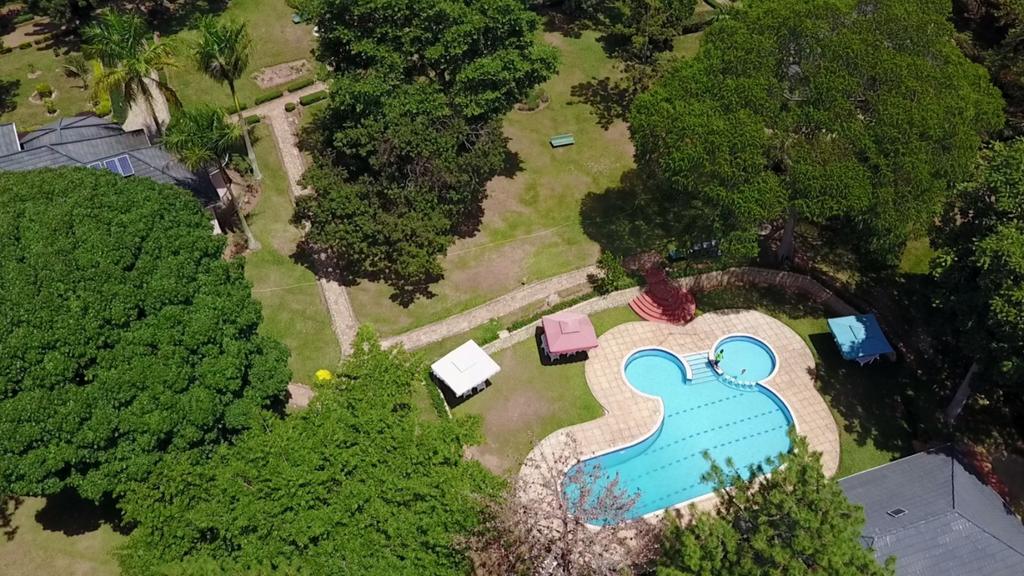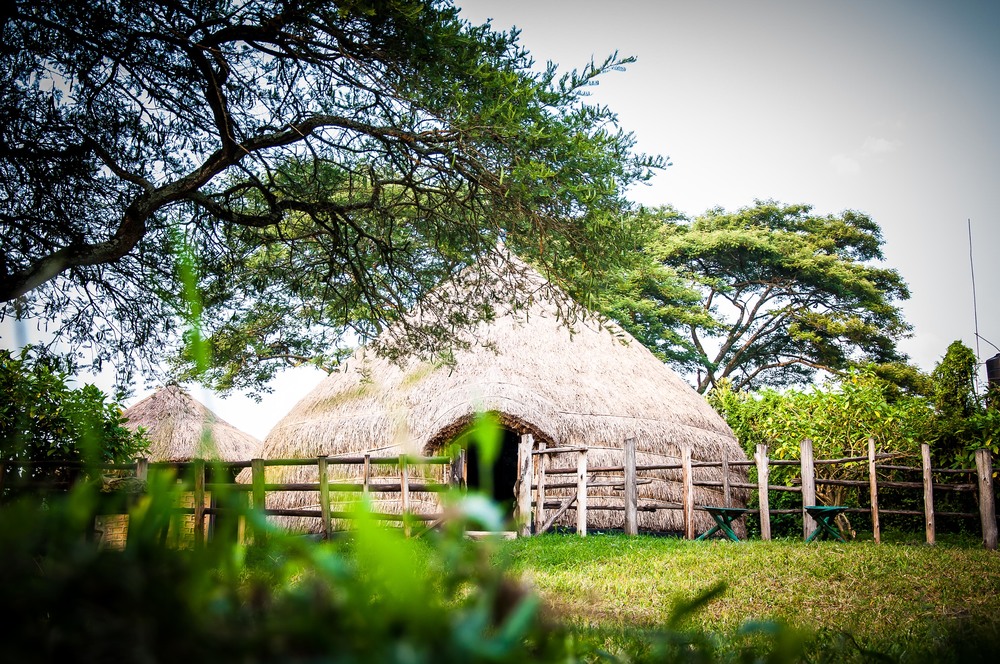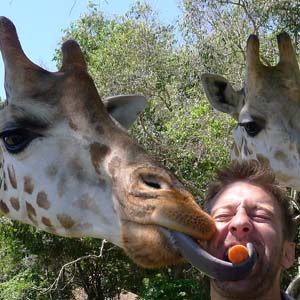Ecotourism is a new form of tourism in the world and practiced in Uganda since it dates back in the 1990s. It includes many activities like nature guided walks, community/ village walks, bird watching , sport fishing, forest walk, mountain climbing, gorilla trekking, butterfly watching, game viewing, chimpanzee trekking, boat cruises, caving, canoeing, primate watching, viewing photography, and other aspects that relates to Natural, cultural as well as Rural tourism.
The major tourism destinations in Uganda include all the 10 protected national parks and wildlife as well as game reserves, forest reserves, community wetlands, events or cultural centres, theme parks, resorts as well as the vital birding areas. Many safaris to Uganda combine nature as well as wildlife and it follows that sustainability would be vital or the visitors exploring the unique Eco tourism destinations within Uganda. The Uganda conservation efforts and tourism have increased in the past years and presently tours are tailored or organised around the different communities and natural environment.
Ecotourism doesn’t mean paying high attention for the line green products and it includes having very affordable Uganda Eco tourism tours while still being mindful of the conservation efforts. It includes visitors travelling with maximum respects of the local cultures and keeping an open mind when planning a safari to Uganda.
Presently Uganda is known as a safe ecotourism destination in the world and there is need to plan correctly all the eco- tourism activities and destination. This can lead to a more modified adventure for the tourists and one that is reliable to the respective communities’ they are to visit. The most thing the visitor’s planning for safaris to Uganda should do is to go local especially when they are under taking tours to Uganda. These should make sure that they use the locally owned hotels and services and also pay close attention to the relevant travel destination news so that to prepare for new regulations or chances that may negatively affect the Eco- tourism experience that they would get on any safari to Uganda. Eventually, the travellers need to do what is best and safest for them, but they must also acknowledge how their actions are affecting their destination areas.
Ecotourism Sites
The main eco-tourism sites in Uganda are as below;
Mabira central Forest reserve; this is Uganda’s largest surviving Natural forest that covers an area of 306 sq km in Mabira central forest reserve. The forest is a natural habitamt of 312 species of trees including the endangered Mililia Exclesa, the Cordia Millenii, warbhugia Ugandanese that has medicinal properties that is famed to cure about forty ailments and the Vurnerable Prunus Africana that cures prostate cancer and boosts the Human immune system.
The forest is home to 315 species of birds like the red headed blue bill, the tit Hylia, the shining blue kingfisher, the black bellied seed cracker, the blue headed crested Monarc, Francolin, Nahan;s , the forest wood hoope, cassin Hawk Eagle, the purple throated cuckoo and some of these species can only be found in Mabira.
The other rare features to be seen here include; 218 butterfly species, 97 moth species, 23 small mammal species especially primates like the monkeys and the Griffin falls. Some of the major activities carried out from this reserve include; bird watching, environmental Education and research, primate watching, camping and picnics, butterfly identification, the forest as well as forest adventuring.
Mpanga central forest reserve; this is a natural forest with rare tree species and other flora species. Among the many tree species includes; the ficus family and Mahogany. The Celtis family species with the large buttresses, this forest boosts lots of primates especially the red tailed monkeys, the nocturnal tours can be arranged to view the bush babies. Yyou can also find lots of bird life here including; the Grey Parrot, Owls, Hornbills, Cuckoos. Ross Turaco and Weaver-birds, also this forest is a home to a variety of Butterflies and Moths.
The main activities carried out from this forest include; bird watching as well as identification. The forest trails are so well developed into major four main routings including; the butterfly trail, the family trail, hornbill trail, as well as the baseline trail. The accommodation facilities present here include; one tourist banda, a self contained Duplex as well as a double room on the main office block that can accommodate over 12 visitors at once. There is a tent for hire at a cheap fee. These are known to be self contained facilities though light meals can be ordered from the house care taker.
This forest is situated in Mpigi district 37 km from the city centre of Kampala city. Its easily accessible through the main Kampala – Masaka highway. It’s also 1 km from the roam head using a well surfaced direct road passable throughout the year.
Lutoboka and Bujanzi central forest reserve;
This forest is located on the ssese islands and is described as the medium altitude moist forests. These form a belt along the lower ridges with a gentle slope from a lakeshore to the centre. The forest walks here are not so active. These forest trails are well developed and the visitors from Lutoboka should not miss a trail that extends from the landing site up the fort where Henry Morton Stanley inclined camp in his way to the mountains of the moon. The Island has got over 31 gazetted forest reserves with over 7, 324 hectares under the control of the national forestry Authority.
The visitors that come here enjoy; sailing, boating, sun bathing, fishing, forest walks, bird watching, primate watching, as well as butterfly identification. Some of these activities can be enjoyed along the shores of the lake. These reserves are mainly in the hands of private developers. There are many developed beaches and resorts for both the upper market and middle market. Some of the beaches include; Pearl Gardens beach, Panorama camping site, Palm Beach hotel, Mirembe Resort beach as well as Ssese. These have access to the White sand beaches ideal for relaxation after a forest walk.
The reserve can be accessed by ship departing from Nkiwogo landing site near Entebbe at 14 hours per day. The ship starts the return journey from Lutoboka landing site at 8 hours or on way reaching the island by ferry from Bukakata / Kachanga landing site near Masaka. Ans starting at 8 hours, the ferry docks at Luku landing site near Kalangala 4 times a day.
Kalinzu Central forest reserve; this one is located in western Uganda and is a natural forest swarming with the terrestrial Bio diversity. It’s well known for 414 species of trees and shrubs. These include; Ficus, Prunus, Stroboia, as well as Africana. This forest has got 378 bird species including; the sun birds, great Blue Turaco, black and white caskets. There are 6 different primate species that can be seen here including; the black and white colobus monkey, chimpanzees, vervet monkeys, blue monkeys, and many more.
The other many species found here include; reptiles, flowers, 262 species of butterflies as well as 97 moths. This forest reserve provides refuge to savannah grassland due to its nearness to the park species like the Duikers, leopards and the wild pigs while standing at the Kishunja Hill view point so activities in the reserve involve forest walks, research trails, as well as the tourist trails.
Just at the top of an escarpment on the eastern edge of the great Albertine Rift valley, there is Kalinzu forest reserve that is 147km. It’s just close to the famed Queen Elizabeth national park and the Maramagambo forest. It lies at an average altitude of 1400m above sea level. The accommodation here is mainly camping but the visitors can get the facilities in Bushenyi or Ishaka towns. This reserve is located in Bushenyi in western Uganda and from the capital city of Kampala, it’s about 375km and 30 km from the district head quarters of Bushenyi along the main Kasese highway. There is a four wheel drive vehicle that is recommended due to the Albertine Terrain with the old logging and winding roads. reserve The main attractions in the reserve include; primates like the chimpanzees, blue monkeys, black and white colobus and the vervet monkeys and the baboons. There are crater lakes including the twin lakes of Kamweru and Kyema and Lake Kamuzuku. The animal species found here include; duikers, antelopes, bush pigs, as well as the Ugandan Kob.
Budongo central Forest Reserve; this is the largest natural forest in Uganda with a surface area of 825 sq km and is extends across three districts of masindi , Hoima and the newly created Bulisa district. Those visitors that seek the serenity and calmness of being next to nature should opt for Budongo forest reserve. It’s preserved and managed by the National Forestry Authority and it’s divided into three zones. This is the oldest in the country while its buffer zone allows Eco tourism as well as research to prosper with its production zone that caters for commercial activities.
The Kaniyo Pabidi Eco tourism site; this is located in the North Eastern part of Budongo Forest reserve. It’s a natural habitat that has 120 chimps. There are 30 chimpanzees that have been habituated for Eco tourism purposes. The other primate species also include; vervet monkeys, blue monkeys, red tailed monkeys as well as Baboons. In Kaniyo pabidi, some savannah grassland species can be viewed include; warthogs, lions, buffalos, bush baucks, duikers and many more.
There are many birds to be seen including; the chocolate backed kingfisher and the pruvels eladosis. This area is home to variety of tree species like the Mahogany as well as Celtic family. The other species found here include; butterflies, moths, tropical flowers and many more. There is chimpanzee trekking, camping, chimpanzee habituation as well as bird watching. The site is located 220km from Kampala through Masindi that is 29km away. The site is alongthe secondary road that connects Masindi with Paraa. There are two local organisations that are involved in Eco tourism near Kaniyo and these include; Boomu Conservation and Crafts Women Association and the Asera Azora Women’s group. These provide; cooking walks, community walks, the simple traditional accommodation hand crafted and camping.
The Busingiro Eco Tourism Site: this is located in the south western part of Budongo forest reserve. This area is home to many primate species like monkeys, chimps, as well as the baboons. The chimps here are not yet habituated for tracking. The animal species found here include; reptiles, butterflies, birds, small mammals, and many other organisms.
The visitors must not miss the royal mile and this is the highlight of Busingiro! It extends with a collection of all the tree species in Budongo forest reserve. The reserve is so beautiful and it’s maintained by the National forestry Authority for its historical, aesthetic as well as recreational reasons. Some of the activities include; butterfly identification, bird watching, primate watching, as well as forest walks, the forest trails here are well developed and well developed and maintained for tourist purposes.
Bugoma Ecotourism site; it’s found in Hoima district and covers an area of about 41,144 hectares. The Eco Tourism in the reserve is influenced by African Nature conservation expeditions; it’s an international private firm with vast adventure in tourism development. There are 10 luxury tented camps for the upper market that are present. This place is gifted with lots of tourist attractions like the reptiles, butterflies, birds, chimpanzees, monkeys, as well as the tree species that are endemic to Bugoma. The forest trails total to 30km long divided into the loops of over 200 m each having been developed. Te site is home the buffaloes, elephants, as well as Ugandan Kobs. The reserve can be accesses through a dirt through a dirt road 70 km from Hoima township.








